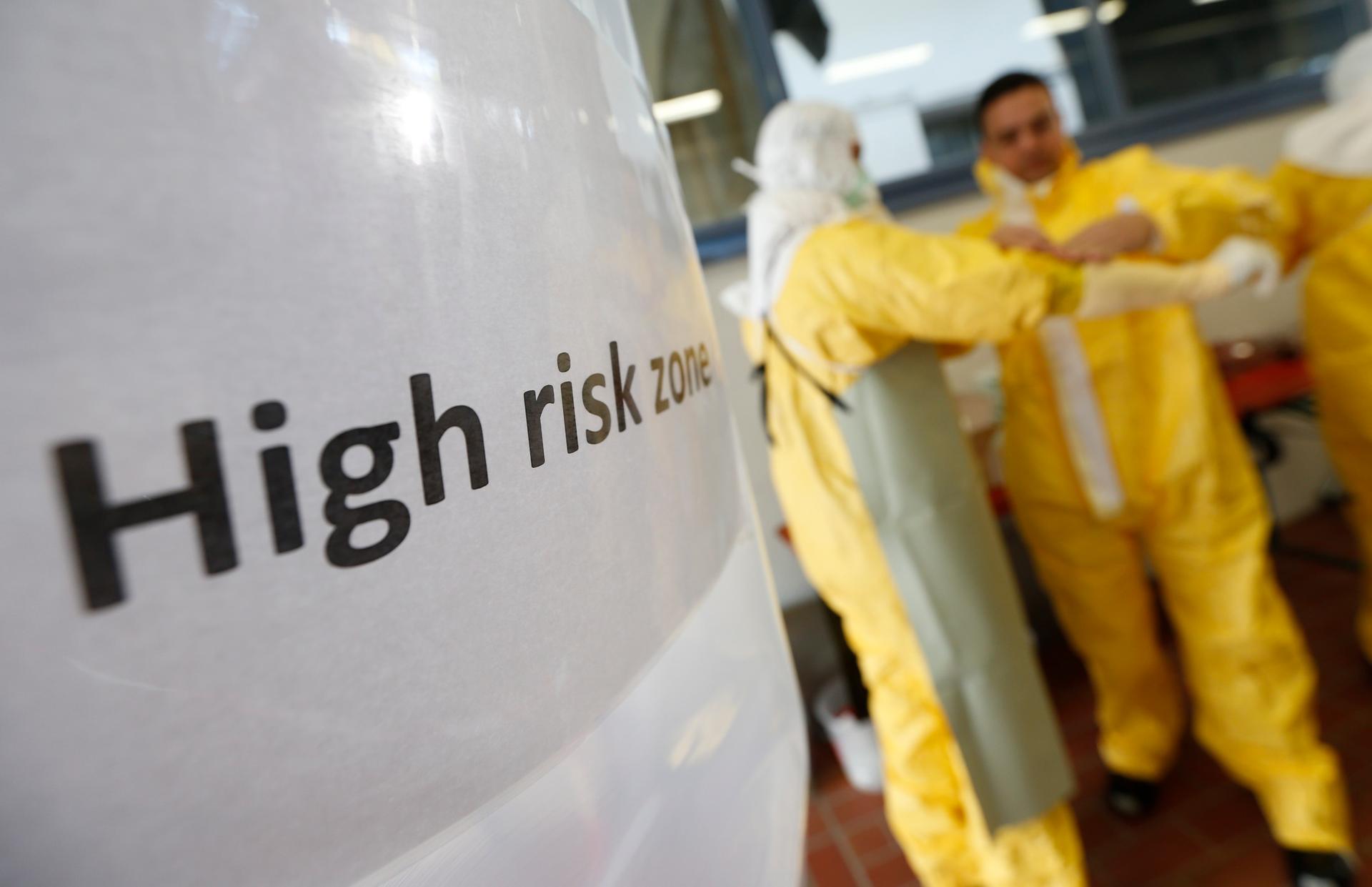Volunteers put on protective suits during an Ebola training session held by Germany's Red Cross in Würzburg, on October 21, 2014
Corsets and hazmat gear are more similar than you might think. "It takes a long time to put on, and takes even longer to take off,” says designer Jill Andrews.
Andrews is owner of Jill Andrews Gowns, a design studio in Baltimore specializing in custom wedding and evening gowns. But this past weekend, Andrews turned her focus from brides to frontline health workers battling Ebola as she participated in the Emergency Ebola Design Challenge at Johns Hopkins University.
The event was an attempt to bring together a wide array of professionals from vastly different backgrounds to design better personal protective equipment for individuals tending to Ebola patients.
“There were biomedical engineers, virologists, public health workers, doctors," Andrews says. "It was a completely diverse group looking for solutions by thinking outside the box. And it was a wonderfully guided design process.”
Andrews focused her efforts on problems stemming from the removal of Ebola protective gear. “Most of the contamination from the PPEs are from doffing [or taking off] the garments,” she says. “There’s a 19-step process, and in that removal process there are so many places where contamination can happen. So part of our goal was to try and simplify that process.”
She says her years of experience working in theatre design came in handy. “I know how to get people in and out of garments quickly and effectively,” Andrews says.
“As a wedding gown designer, I also know about fit and about functionality,” she adds. “People have to do very specific things [in gowns] — like dance, for instance. And I’ve done a lot of designs for Orthodox Jewish weddings and Mormon weddings, so I’m familiar with very strict codes of modesty and that helps informs garment need [in PPEs].”
Andrew couldn't go into specifics — yet — about her team’s design ideas for reimagined protective gear, but she says that “within the next few months, we hope to see the garments we’ve improved hit the ground.”
As to why she made the jump from the world of wedding dresses to the world of infectious diseases, Andrews says it’s really quite simple. “It was my chance to help,” she says. “My chance to use my powers for good … for really, really good.”
Our coverage reaches millions each week, but only a small fraction of listeners contribute to sustain our program. We still need 224 more people to donate $100 or $10/monthly to unlock our $67,000 match. Will you help us get there today?
